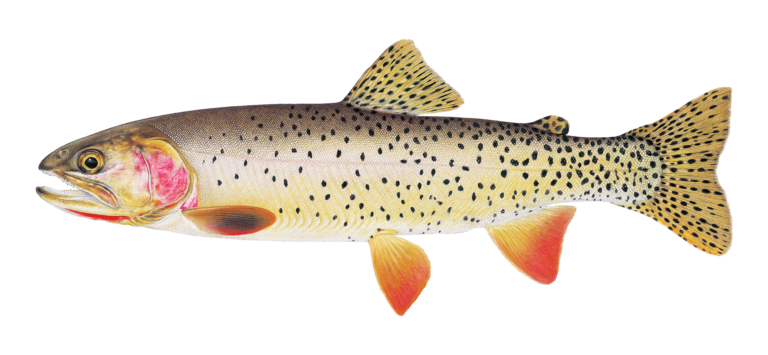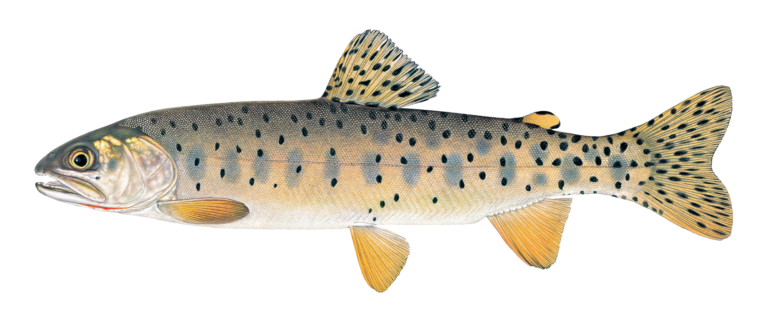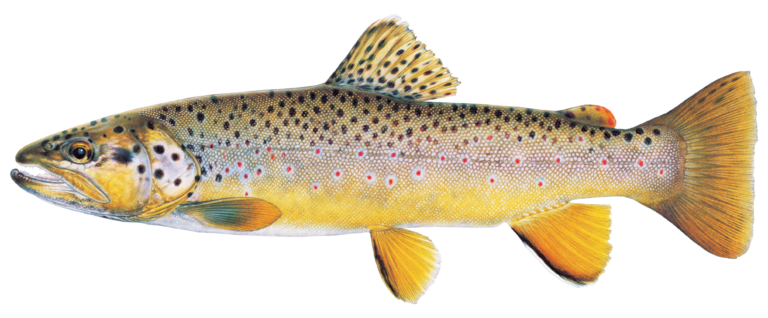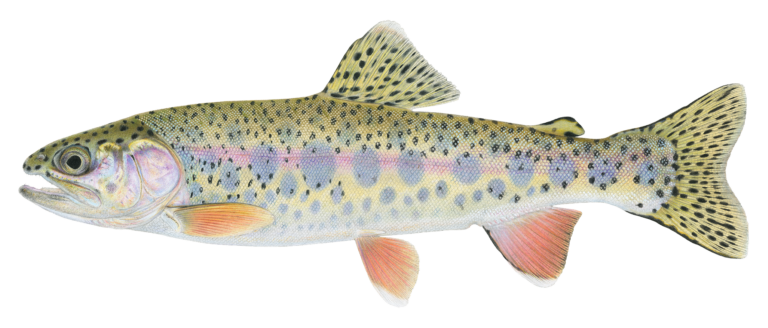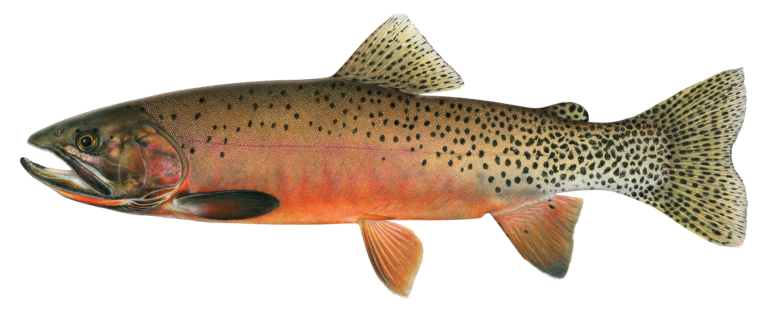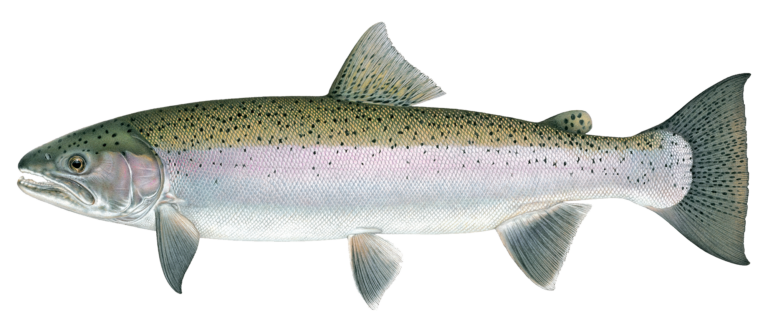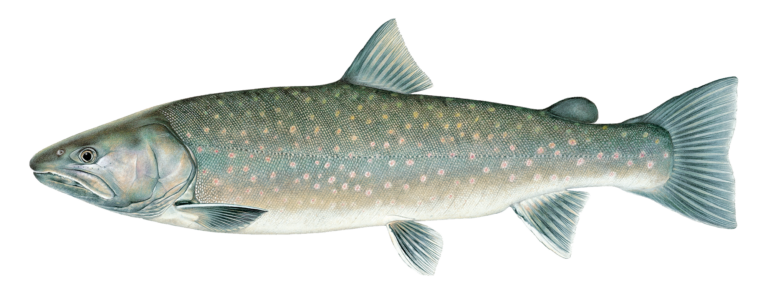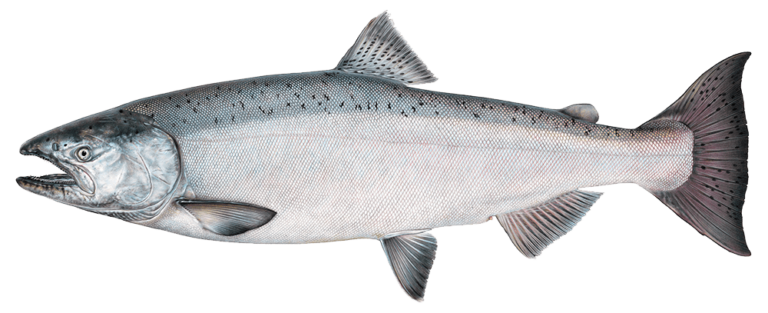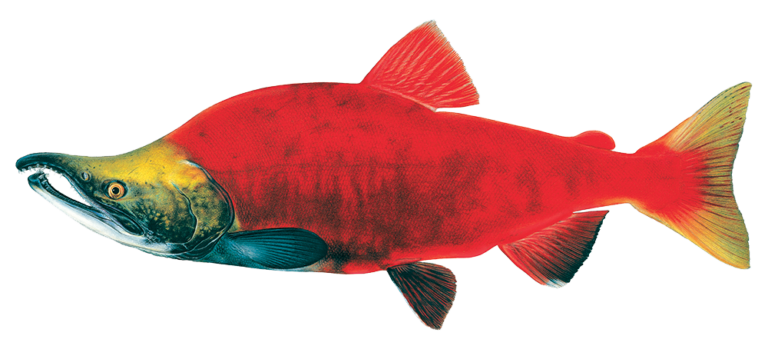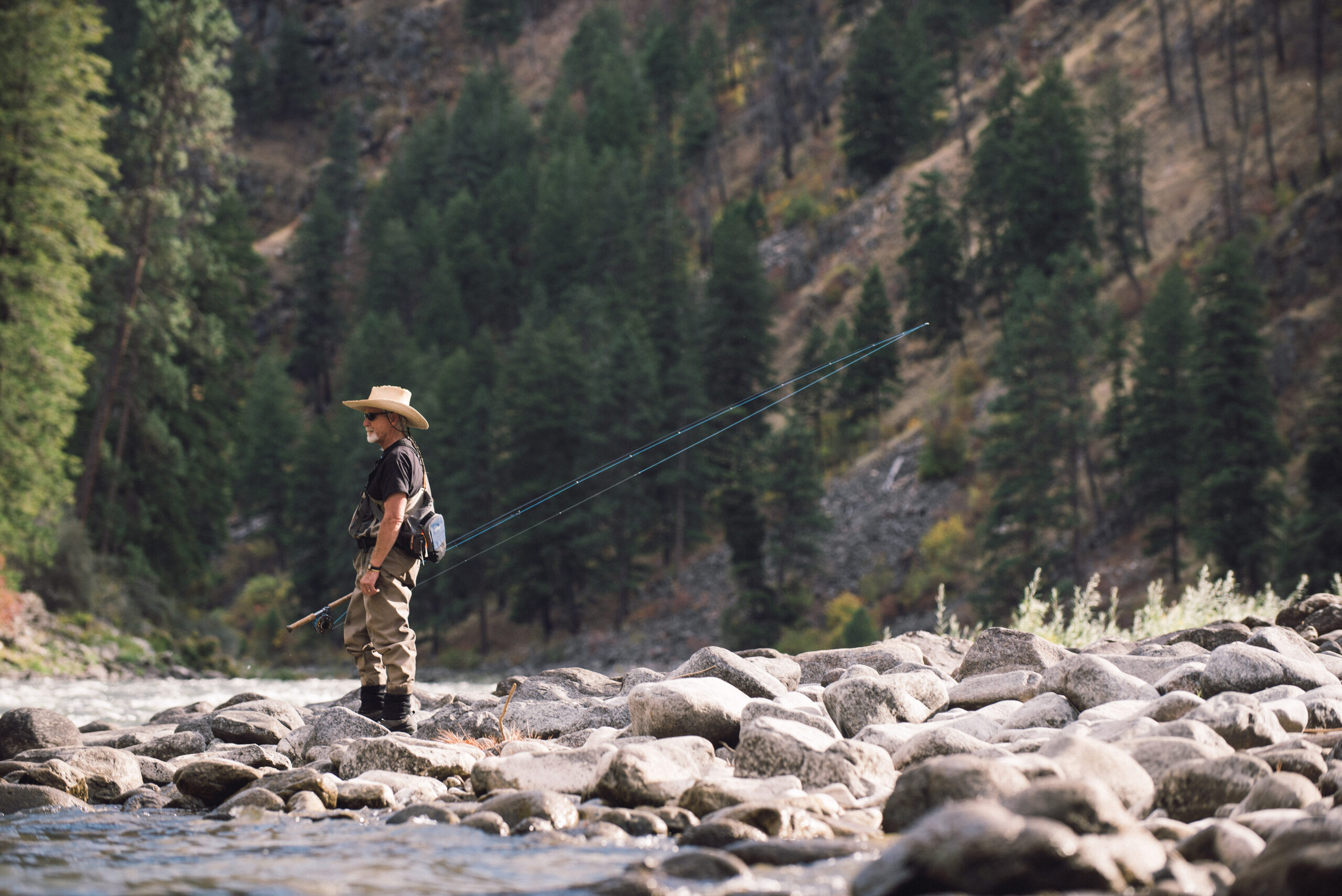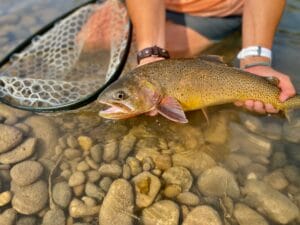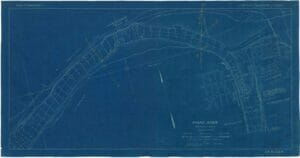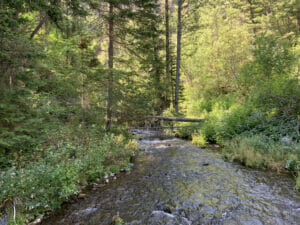Idaho

Overview
The Snake River and its tributaries are synonymous with Idaho, and the state contains nearly 100,000 miles of flowing water, many rising from the western edge of the continental divide. Idaho is headwaters country. The high-elevation streams that spring from Idaho’s rugged mountains and high desert terrain contain some of the coldest, most climate-resistant habitat for trout and salmon in the lower 48. Idaho’s 9.3 million acres of federally inventoried roadless land and 4.7 million acres of Wilderness are some of the last best places for trout. These protected lands provide important spawning and rearing habitat for wild salmon, steelhead, redband trout, bull trout, and three species of cutthroat trout.
Threats & Opportunities
Historic mining, logging, and development in Idaho have degraded water quality, fragmented habitat, and reduced stream flows. The impacts of climate change, including drought and higher water temperatures, pose an ongoing threat to native trout. We are working with state and federal agencies, tribes, private landowners, and other local partners to restore habitat, reconnect streams, improve water quality, and make waters more resilient to climate change. By participating in several collaboratives, we have the opportunity to lead discussions on land management, forest planning, and watershed management.
How We Work
Reconnection
By removing barriers, creating and advocating for fish ladders, and enhancing in-stream flow, we are reconnecting watersheds that are essential to salmon, steelhead, and trout.
Restoration
Wild and native trout and salmon need cold, clean water and functioning ecosystems. We are working to restore rivers and streams, clean up pollution, create riparian barriers, maintain sufficient water flows and recover healthy watersheds.
Advocacy
From the effort to protect roadless wilderness in Idaho to the campaign to remove four lower Snake River dams and recover wild salmon, TU works with decision-makers and grassroots leaders to advocate for policy that protects Idaho’s rivers and streams and the fish that rely on them.
Collaboration and Partnership
Working with state and federal agencies, municipalities, conservation districts, and NGOs, we are leading discussions on land management, forest planning, watershed health, water use, and more.
Science and Monitoring
Using the best available science and research, we invest in cutting-edge approaches to conservation. Our team monitors water quality, population health, and flows to ensure effectiveness.
How You Can Help
Help us advocate for salmon and steelhead recovery by removing the lower four Snake River dams.
TAKE ACTIONLearn how you can be a part of our work to recover Idaho’s rivers and wild fish
Idaho Conservation Team
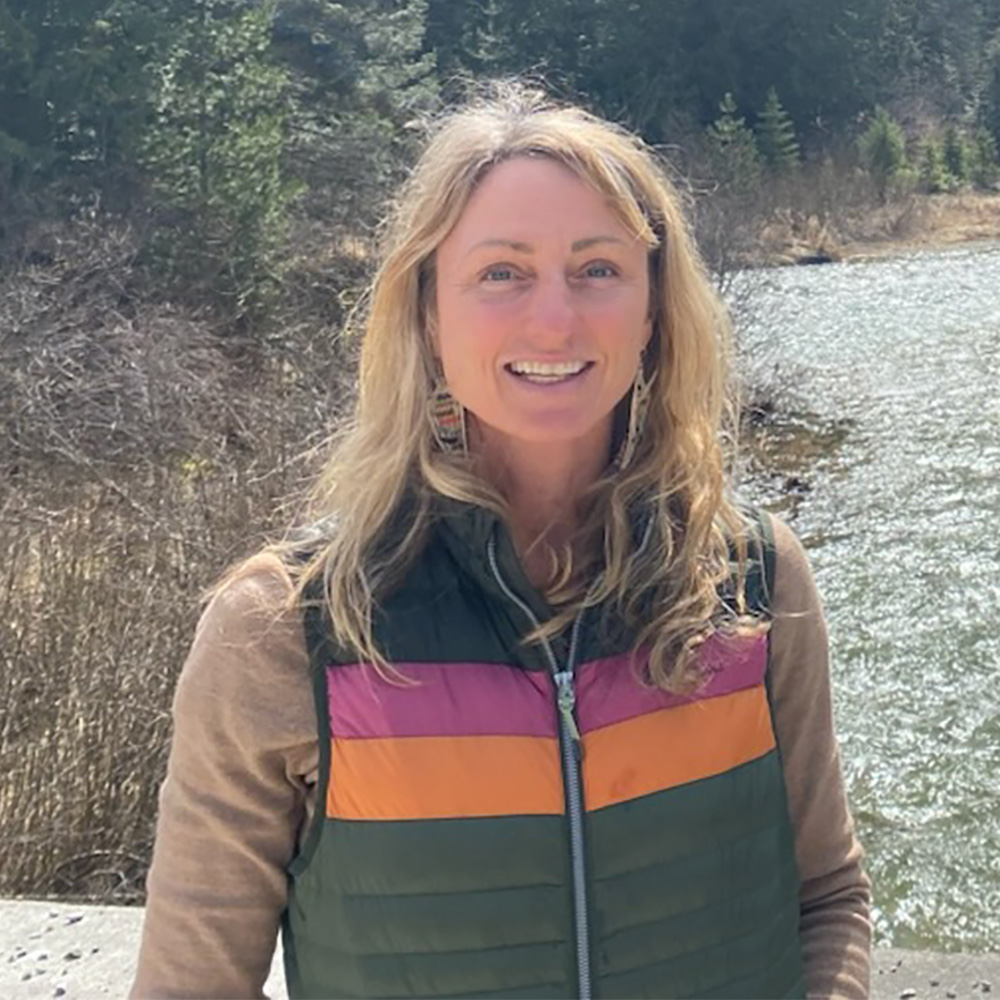
Erin Plue
Idaho State Director
erin.plue@tu.org
Idaho State Director
erin.plue@tu.org
Priority Waters

-
Bear River
Running for about 500 miles out of the Uinta Mountains and into the Great Salt Lake, this is the longest terminal river in the Western Hemisphere that does not flow to the ocean. The Bear is home to the Bonneville cutthroat trout, which was thought to be extinct in the 1950s but is recovering following decades of work. TU is building on two decades of work in the Bear River basin to increase fish passage, restore habitat, and reconnect streams.
-
Southeast
Including the Willow, Blackfoot, and Portneuf subbasins, Idaho’s Southeast Priority Waters contain high-elevation, cold, clean waters that support Yellowstone cutthroat trout, one of the most famous of the cutthroats and subject of significant recovery efforts. Through the Upper Blackfoot Confluence, a collaboration among TU, mining companies, and the Idaho Conservation League, more than $5.4 million has been invested since 2011 in stream restoration projects to recover Yellowstone cutthroats and improve water quality.
-
Wood River
Redband trout are currently distributed throughout 474 miles of the three Wood River subbasins, the Big Wood, Little Wood, and Camas. Emerging evidence suggests that these populations are still primarily native, despite over a century of rainbow trout introductions.
-
Payette and Boise
Including the Boise and Payette River subbasins, the Southwest contains nearly 1,200 miles of critical habitat for bull trout and is home to conservation populations of redband trout. The South Fork Boise River hosts one of the most successful urban fisheries in the country. In these waters, we are reconnecting streams, conducting watershed and water use planning, and working with landowners to restore habitat and increase water storage.
-
Upper Salmon River
The Upper Salmon River is home to spring and summer Chinook, steelhead, and sockeye salmon, and critical habitat for bull trout and Westslope cutthroat trout. We are building on decades of work with agencies, landowners and partners to reverse habitat degradation from historic mining, logging, and agricultural practices.
-
South Fork Salmon River
Recognized as a traditional hunting and gathering area of the Nez Perce and Shoshone-Bannock Tribes, the South Fork Salmon River provides key habitat for steelhead, Chinook salmon, and bull trout. The area is in Boise’s backyard and hosts incredible recreational fishing opportunities. Historical timber harvest, development, and mining have led to declines in salmon and steelhead populations.
-
Clearwater River
The Clearwater River provides critical habitat for chinook, steelhead, Bull trout, and Westslope cutthroat trout. The basin is home to very popular steelhead and salmon recreational fisheries. Historical mining, hydropower, clearcutting, and associated environmental degradation have impacted water flow, quality, and habitat in the area, resulting in loss of wild salmon and steelhead populations
-
Coeur d’Alene
The Coeur d’Alene and St. Joe Rivers support important Westslope cutthroat and bull trout populations. Predatory non-native fish species and past contamination from mining are limiting factors for native trout in the area. The Coeur d’Alene drainage includes a Superfund site around the South Fork CDA River, where 100 million tons of mining waste was dumped into the water. More than $140 million is being invested in restoring habitat and water quality in the basin.
-
Pend Oreille
Including the Priest, Pend Oreille Lake, and Lower Clark Fork subbasins, this area was once home to an abundance of bull trout and Westslope cutthroat trout and we are working to restore these populations. In 1952, the construction of Albeni Falls and Cabinet Gorge dams inundated stream habitat and blocked access to migratory fish. Additionally, logging and associated road construction degraded stream habitat. The relicensing of the dams on the Clark Fork River in 1999 provides 45 years of mitigation funding for habitat restoration and conservation in Idaho tributaries to Lake Pend Oreille.

